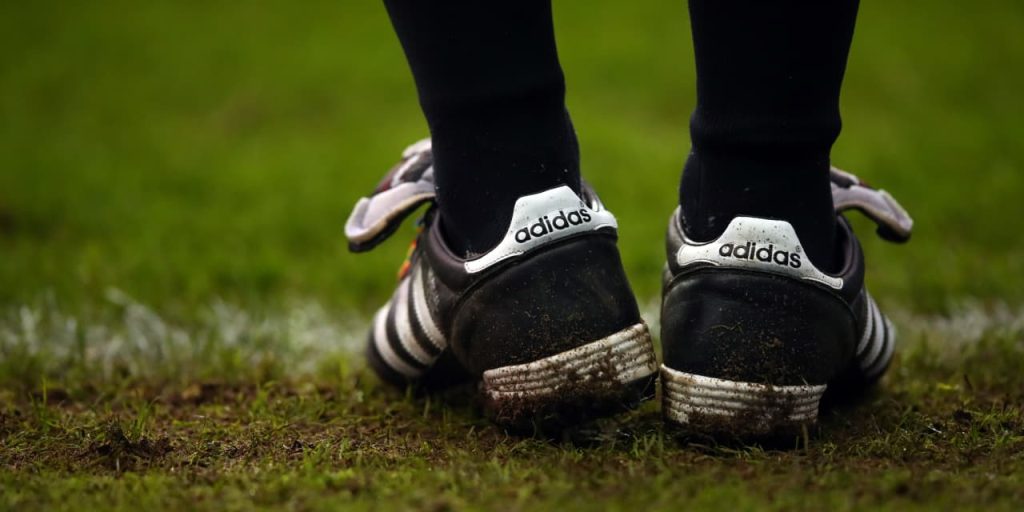Adidas’ revenue fell 5% year-over-year.
Marc Atkins/Getty Images)
Adidas
surprised the markets Wednesday by pre-announcing its fourth-quarter results. While the quarter itself was good enough, the company’s guidance for fiscal 2024 reignited concerns that demand for athleticwear was slowing in key markets, sending shock waves through the sector.
Adidas
expects sales to grow at a mid-single-digit annual rate in 2024, the company said, as it navigates several obstacles, including lagging sales in North America, unfavorable foreign exchange rates, and ongoing challenges with selling off the remainder of its Yeezy inventory.
“For 2024, we expect sales to start flattish, but to then improve every quarter,” said CEO Bjorn Gulden Wednesday. The company officially announces results on March 13.
The company’s guidance weighed on the retail sector at large Wednesday, with the
SPDR S&P Retail ETF
(XRT) closing 2.4% lower. Athleticwear stocks bared the brunt: Adidas shares fell 9.4% Wednesday,
Nike
was down 2.5%,
Under Armour
3.7%,
Lululemon Athletica
5.7%,
Deckers Outdoor
2.6%, and
On Holding
3.4%.
Part of the reason for the blowback is that Adidas’ announcement comes on the heels of Nike’s guide-down in December, and
Puma’s
disappointing preliminary results last week.
“It seems clear that the large, global athletic brands continue to face headwinds, and this is driving most of the athleticwear stocks in our coverage down,” wrote Wedbush analyst Tom Nikic in a note Tuesday.
Nikic isn’t too concerned about the implications for some of the sector’s “buzzy” brands, such as Hoka, On Holding, and
Lululemon.
Those companies have clean inventories and enough brand momentum to carry them through a tough spot for consumer demand, he wrote.
A company like
Under Armour
may be more at risk, Nikic added, especially because Adidas called out challenges in North America, which accounted for over 60% of Under Armour’s sales in the company’s latest quarter. Under Armour reports earnings next Thursday.
Adidas didn’t pre-report exact numbers for its North American business, but Gulden said there were ongoing challenges in the segment.
Based on unaudited preliminary figures, overall revenue fell 5% to €21.4 billion ($23.1 billion) in 2023. Analysts had penciled in €21.6 billion ($23.4 billion) for the year, according to FactSet. On a constant currency basis, revenue was flat from 2022, slightly better than the company’s guidance for sales to fall by a low-single digit percentage. Adidas’ decision to discontinue its Yeezy line, previously made in partnership with Ye, the rapper formerly known as Kanye West, was a €500 million drag on revenue, the company said.
Adidas generated an operating profit of €268 million in 2023, better than previous guidance for a loss of €100 million but still below 2022’s €669 million profit. The outperformance came from the company’s decision not to write off most of its existing Yeezy inventory. In 2024, Adidas plans to sell the remaining Yeezy product at cost, which could result in revenue of about €250 million. But since the sale is at cost, it likely won’t have any effect on operating profit over the year, the company said.
Operating profit will be around €500 million in 2024, Adidas said—close to 60% below the Street’s consensus for close to €1.3 billion.
“We believe 2024 will be another year of transition for Adidas as it sets itself up to get back to [double-digit] growth and 10% operating margin,” wrote Robert Drbul, analyst at Guggenheim.
Write to Sabrina Escobar at [email protected]
Read the full article here




